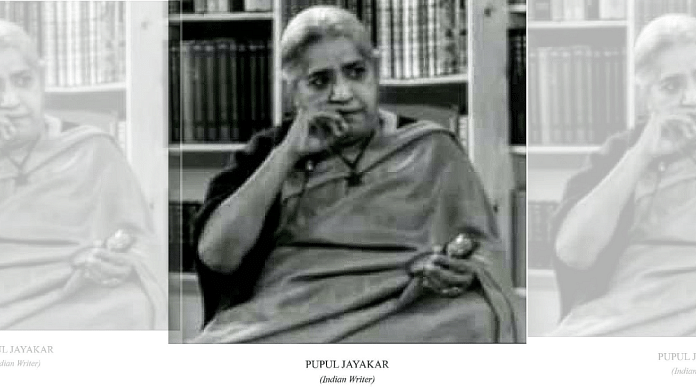Thank you dear subscribers, we are overwhelmed with your response.
Your Turn is a unique section from ThePrint featuring points of view from its subscribers. If you are a subscriber, have a point of view, please send it to us. If not, do subscribe here: https://theprint.in/subscribe/
The Cultural Arsenal
In hallways of power where diplomacy used to speak through treaties and trade agreements, Pupul Jayakar brought in a new language made of silk threads, indigo block printing, and Indian craftsmanship that had been passed down through the ages. This visionary cultural strategist was starting a quiet revolution that would change how the world saw India through its textiles long before the term ‘soft power’ became part of diplomatic language. She saw what others didn’t: that a Banarasi sari could say a lot about how sophisticated India is, and that traditional textiles could connect people from different cultures in ways that formal diplomacy often failed to do.
Curating the Nation
Jayakar’s textile diplomacy was based on careful record-keeping and smart presentation. She was the head of the All-India Handicrafts Board from 1961 to 1969 and started what could be called the first systematic cultural mapping of India’s textile heritage. Her method was both organised and passionate. She travelled to remote villages to document dying techniques and, most importantly, made a complete list of India’s textile vocabulary that could be shown to people from other countries. The Festival of India series, which started in the 1980s under Rajiv Gandhi’s government, was her greatest idea. Jayakar knew that India after colonialism needed to show itself not as a country looking for approval, but as a civilisation sharing its riches with the world. Instead of showing textiles as museum pieces, Jayakar showed them as living traditions. Fashion shows with modern Indian designers using traditional methods were shown next to demonstrations by master weavers. This created a story of continuity and innovation that really spoke to people from all over the world.
The Gallery Wars
Jayakar’s vision went beyond just putting on a show; she wanted to create a unified visual identity for India. She knew that how India marketed its cultural products would have a big effect on how people saw the country as a whole in a world that cares more and more about appearances. Jayakar came up with what could be called the ‘Cultural diplomacy’ approach by working closely with groups like the Crafts Council of India, which she helped start in 1964. This meant choosing fabrics that could send certain messages about India’s cultural sophistication, technological progress, and artistic excellence. Her partnerships with museums and cultural institutions around the world were just as important. Jayakar used textile diplomacy at the Victoria and Albert Museum in London, the Metropolitan Museum of Art in New York, and the Musée des Arts Décoratifs in Paris. These partnerships weren’t just one-way cultural exports; they were carefully planned exchanges that made India an equal partner in global cultural conversation.
Handloom Economics
Jayakar’s idea of textile diplomacy went beyond just appreciating other cultures to include serious economic strategy. She knew that cultural prestige could lead to business success and that international recognition of Indian textiles could help traditional craftspeople find new customers. Her work with the Export Promotion Council for Handicrafts showed that cultural diplomacy could help the economy without hurting the integrity of the art. Her work with designers like Ritu Kumar and later generations of Indian fashion entrepreneurs created a pipeline that is still benefiting from the foundation she laid. Her writing, especially for books like ‘Textiles and Ornaments of India’, served two purposes: it kept knowledge alive for future generations and made reliable reference materials that international buyers and designers could trust. This method changed Indian textiles from interesting items to goods, from handmade items to high fashion.
Power Dressing Politics
Jayakar’s close ties to the Nehru family, especially her close relationship with Indira Gandhi, gave her unique chances to use textile diplomacy as part of India’s larger foreign policy strategy. Her influence on the Prime Minister’s clothing choices, carefully picking handloom saris for state visits and strategically using regional textiles to honour visiting dignitaries, showed how personal diplomacy could make cultural messages stronger.
The Unfinished Tapestry
In a time of globalised cultural exchange, her belief that cultural products should be presented in a way that is both real and relevant to today’s world is still important. The fact that Indian fashion designers are doing well on international runways, that people around the world are becoming more interested in sustainable and handmade textiles, and that India is being recognised more and more as a source of design innovation all come from the foundation that Jayakar set up. In a time when cultural diplomacy is just as important as economic diplomacy, her idea of textiles as cultural ambassadors has turned out to be very accurate.
These pieces are being published as they have been received – they have not been edited/fact-checked by ThePrint.


